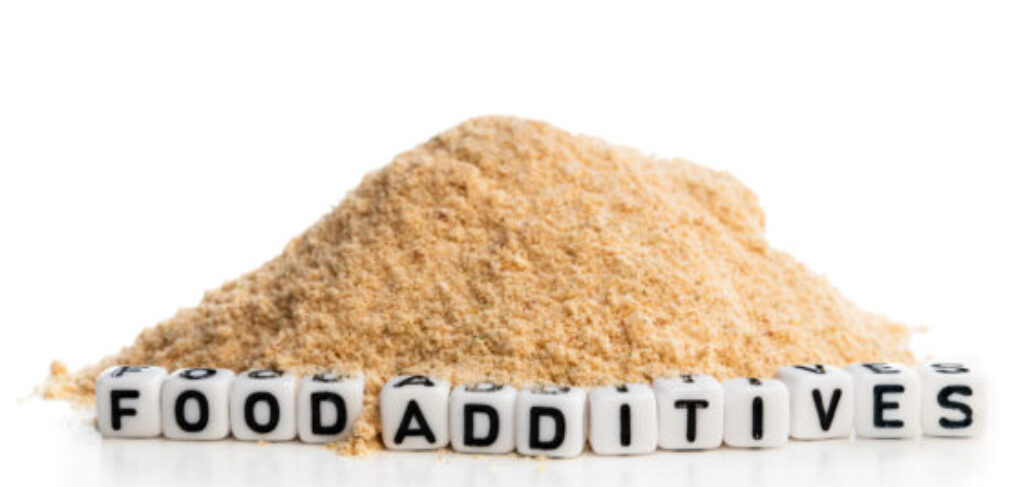What Exactly is TBHQ and Should We Be Eating It?

One of the many reasons to eat real, unprocessed food is that when we do so, we have a better chance of knowing what we’re getting.
Buy a bunch of organic broccoli and there’s not too much to be confused by, apart from the inherent uncertainty that is, sadly, a part of our modern food supply system.
We can’t really be sure of what the soil quality was, even if the grower themselves is certified organic, there’s no telling what practices and chemicals their neighbors might employ.
Other than growing all of our own food, developing relationships with local growers is key in helping to rebuild our local communities, revitalize our soil quality and decrease the carbon footprint.
Suffice to say, the more we can rely on real food that we can actually identify as food, the better off we are.
Which is exactly why the subject of being able to decipher labels comes up time and time again.
Back in the day, we were advised to look for low fat, then fat free.
We were also told to avoid salt, and then we moved into the low carb and keto arena, which, while perhaps based on what was once a valid approach to eating, only served to make matters more confusing, steering consumers to look only at certain parts of already tricky labeling, with the bottom dollar as the most important goal… not the health of the people who eat the products.
There are thousands of ingredients on the GRAS (Generally Recognized As Safe) List, published by the FDA (1) but the FDA and the public know little about the safety of these ingredients and other known GRAS-designated ingredients are believed to pose significant health risks (2).
Let’s focus in on just one of these additives: TBHQ (tert-butylhydroquinone).
You’ll often find TBHQ in foods like crackers, fats and oils, chips, donuts, some breads, popcorn, other snacks, pre-made frozen foods and packaged dinners. The U.S. Food and Drug Administration (FDA) classified TBHQ as Generally Recognized as Safe, or “GRAS,” and approved its use in foods in 1972.
Why is it used?
As it is a preservative, it prevents fat oxidation which can cause the foods to lose flavor, change color and deplete their nutritional value. Since oxidation can lead to fats turning rancid, TBHQ can also help increase shelf life (3).
Let’s just think about this for a minute: a preservative. Increased shelf life. So what exactly happens when we ingest this?
Since this is not a food, but a synthetic compound, it’s not something the human body can digest, assimilate and eliminate.
Because of this it’s not as simply as assuming that having a little bit now and then is not a big deal.
It is.
Over time, each does of this or any harmful additive builds up and creates a toxic load which can lead to increase rates of inflammation and illness.
Research has found several health problems associated with food preservatives like TBHQ and BHA, another preservative, (Butylated hydroxyanisole) over time can cause chronic and nutritional disorders and have genotoxic, cytotoxic, and immuno-inhibiting effects on your body (4).
The National Library of Medicine states in one study (5) that “The additive TBHQ should be considered a skin, eye irritant and a potential skin sensitiser. Exposure of the user via inhalation is considered unlikely; therefore, a risk is not expected.”
In another statement, the same body states, “cases of vision disturbances have been reported when humans consume TBHQ. This organization also cites studies that have found TBHQ to cause liver enlargement, neurotoxic effects, convulsions, and paralysis in laboratory animals.” (6)
Yet it’s used in everything from Domino’s Pizza to Cheeze-Its to Reese’s Peanut Butter Cups and many, many more ‘foods’, many of which are marketed toward children. (7)
The US Food Preservative Market is a multi-billion dollar industry and an estimated 60% of food purchased by Americans contain technical food additives including coloring or flavoring agents, preservatives, and sweeteners (8).
The GRAS list keeps getting longer and longer and experts estimate more than 1,000 GRAS substances have entered the food supply without FDA or public knowledge; both the FDA and the public know little about the safety of these ingredients.
So what can we do to create change?
First and foremost, we can simply not buy what these companies have to offer.
It must be noted that there is an entirely other, and hugely important piece of this conversation, which is that an estimated 37.8 million people in the US are living in what is referred to as a food insecure circumstance (9).
It’s not an option of even being able to choose the better food, which is why it becomes all the more critical for anyone who is in a position to buy local and grass-fed rather than factory farmed and organic rather than conventional, even if it is a stretch, to do so.
When the demand for the the refined, highly processed junk which is not even food decreases and the demand for sustainable, healthier for people, animals and planet alike increases, we will be able to see an upward shift in who can afford to eat what.
Tapering away from the processed food may indeed be challenging, partly due to the addictive nature of many of these ingredients; foods packed with added sugar, fat and salt trigger the brain’s reward system, setting up a cycle of craving and addiction (10).
It may be an alarming wake up call at first, but it’s absolutely doable, especially when you have other healthier options to replace the bad stuff.
Even for the parents out there, a little dose of creativity goes a long way when coming up with healthy swaps for the little ones in your family, despite the initial push back they may serve you with.
In the long run, everyone benefits; food is medicine and it’s far healthier (and less costly in the long run) to buy the better (real food), invest a small amount of time in cooking and prevent sickness from occurring in the first place.
https://www.fda.gov/food/food-ingredients-packaging/generally-recognized-safe-gras
https://www.ewg.org/news-insights/news/2024/03/what-gras
https://foodinsight.org/what-is-tbhq/#
https://www.sciencedirect.com/topics/pharmacology-toxicology-and-pharmaceutical-science/butylated-hydroxyanisole
https://www.ncbi.nlm.nih.gov/pmc/articles/PMC7009650/
https://www.healthline.com/health/food-nutrition/potential-tbhq-dangers
https://www.ewg.org/sites/default/files/u352/EWG_TBHQ_FullChart_C01.pdf
https://www.georgeinstitute.org/media-releases/buyer-beware-60-of-foods-purchased-by-americans-contain-technical-food-additives
https://convoyofhope.org/articles/food-for-people/





